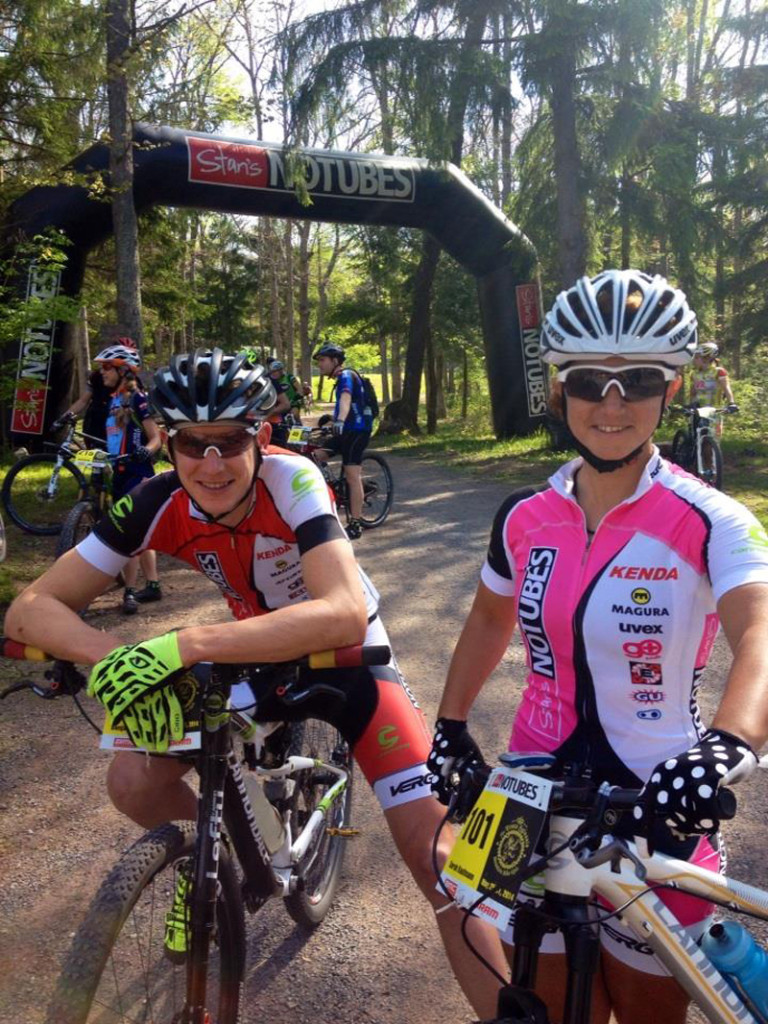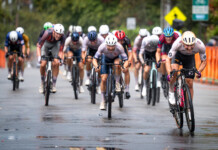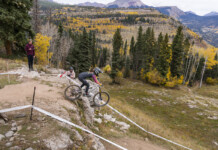If lap format and single-day XC mountain bike races are leaving you longing for a more ‘epic’ challenge and adventure, mountain bike stage racing should be on your list. Though a big investment in planning, training, money and energy, they are worth every expenditure. Stage races are gaining popularity and there are now many options the US and Canada at different times in the season with unique terrain and challenges. I just completed the Trans-Sylvania Epic for the third time. TSE is a seven day race centered around State College, Pennsylvania. The race is known for its summer camp atmosphere and the unforgiving rocky terrain. The 2014 event was held from May 25-31 in Spring Hills, PA.

George
As my third go at the race, I knew pretty well what I was getting myself in to. I love the rocks and technical riding in State College! The trails there make our Utah trails look like super highways. Every trail is like a rock puzzle where you have to find the line and fight for every rocky inch to clean it. The terrain is notorious for breaking bicycles and catastrophic mechanicals are so common at TSE that it may be the only mountain bike races to offer neutral bikes at the aid stations so that if a rider can limp their bike to the aid station, they can still finish the stage and live to race another day.
Accommodations vary at the race and run from camping to RVs to commuting back and forth the 30 minutes to and from State College. I stayed with my teammate in a pretty plush cabin in a campground about a mile from the venue. (All but two of the stages start at a central location, where most people stay). We had a kitchen and shower in the cabin, making cleanliness and cooking pretty simple. By the middle of the race, the simplest tasks feel overwhelming so these conveniences are a big deal!
The week gets started with a time-trial style prologue. It is the shortest stage at 15 miles and offers a good taste of what’s to come. It includes a fair amount of rocky singletrack, a healthy section of road to keep your legs honest and finishes with a section of super tight, twisty singletrack with lots of trees to grab your handlebars just when you’re tired and your concentration is waning. The time trial sorts the field, establishes leaders in each category and gets the lactic acid flowing. This year, Day 2 was probably the most challenging stage. With 42 miles and nearly 6,000 feet of climbing, it was the longest day, with most of those miles on very slow, technical singletrack. Day 3 was a welcome reprieve in the form of the Enduro stage. It was a nice opportunity to spin the legs out, nurse our Stage 2 wounds, chat with other racers on the climbs and rip the descents. But if you dilly-dallied too long, you got caught in a hard-core Pennsylvania thunderstorm that rolled in in the afternoon! Day 4 was back on the rivet with the ‘road’ stage. Though there was plenty of slick singletrack in the 40 mile stage, the day went by much quicker than Day 2, with significantly more fast-moving doubletrack and road. Day 5 was a remote stage at R.B. Winters State Park. This area is ridden less than many of the other routes and the trails are rough and raw. Day 6 is the Queen Stage and features the rock masterpieces of John Wert and Tussey Ridge trails. Amazing! Day 7 is often a bit of a parade lap as many of the GC positions are solidified and fatigue overcomes the desire to dig deep again. Finally, there is Stage 8, the unofficial party stage with hot laps around the pond (and may or may not include beers and/or traditional Pennsylvania Whoopie Pies with every lap…).
Though the stages each day are the timed portions of the race, the race for recovery begins as soon as you get off your bike. Recovery drink, shower, food, feet up, nap, more food, bike maintenance. As the week goes on and common tasks feel more and more challenging, in some ways things get easier as a routine gets ingrained and we turn into stage race zombies. Auto-pilot. There were several afternoons where my teammate and I barely said a word to each other after the stages. There were no ill feelings, neither of us was grumpy. We were just too tired to do anything more than the required tasks to recover from the previous effort and prepare for the next.
As some tasks fall into a routine and get easier, some things get harder. Despite burning thousands of calories each day, many people find that eating becomes very difficult. It feels like a chore and the process of chewing becomes downright unbearable. But it’s the fuel you will need for the next stage. So it must be done. Many of us experience a constant queasy stomach. I have found that eating more fat really helped me with that. Everyone will find hacks to manage their personal demons at a stage race. I consider myself a pretty experienced racer. I got my pro license six years ago and have done my share of challenging races. I work as a coach and help athletes prepare and compete for all types of races. But inevitably stage racing provides new challenges. Everyone’s body reacts differently to the overwhelming physical stresses presented by multi-day racing.
I battled my own demons at Trans-Sylvania this year and rode to a fifth place finish in the open women’s field. It was a grueling week with highs and lows and everything in between. The hardest races, the ones we swear off while doing them are often the ones that keep us coming back. So much can go wrong in seven days…and so much can go right. How do you put it all together? I will have to take another crack at TSE to figure it out.
For more information on the TSE, visit: outdoorexperience.org/tse/
Training for a Stage Race
To train for multi-day racing, you will need cross-country length to endurance fitness. Stage races usually feature stages in the 3-6 hour range for most racers on most days. Though they aren’t typically at quite the high intensity of XC racing, you will need high end fitness to be competitive and you will need to be able to repeat the effort day after day. As with training for any XC or endurance race, you will start your training by building a solid base of steady distance riding to tempo pace. Road miles can help with this phase of training.
As you get closer to your goal race, threshold and VO2 intervals will tune your engine. Throwing in some XC races will help you here, especially if you can stack up back to back race efforts on consecutive days (or schedule a hard workout the day before your XC race). This will allow you to simulate the demands of race efforts back to back and dial in your recovery needs. For more specific training protocol, please contact me.









